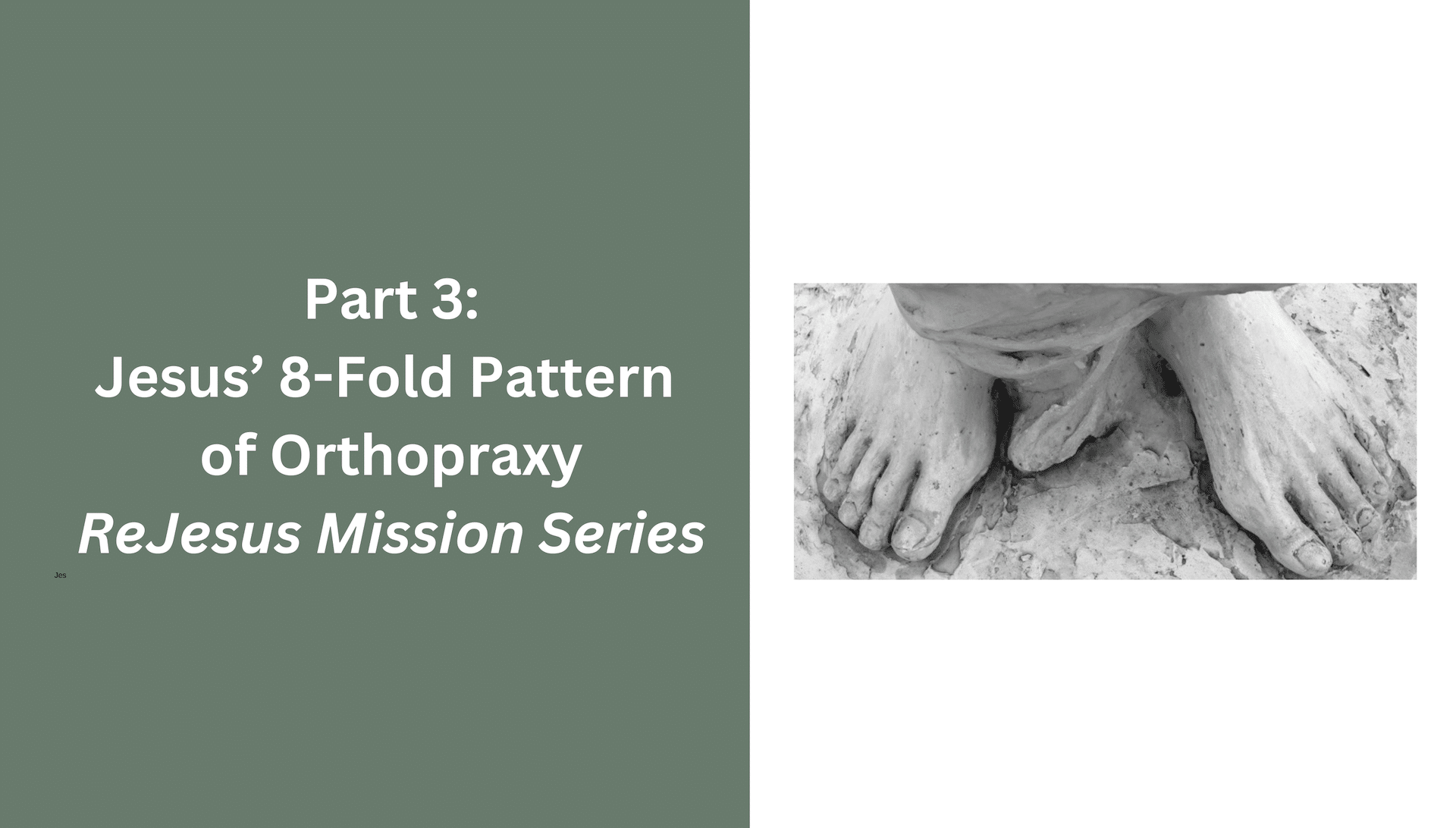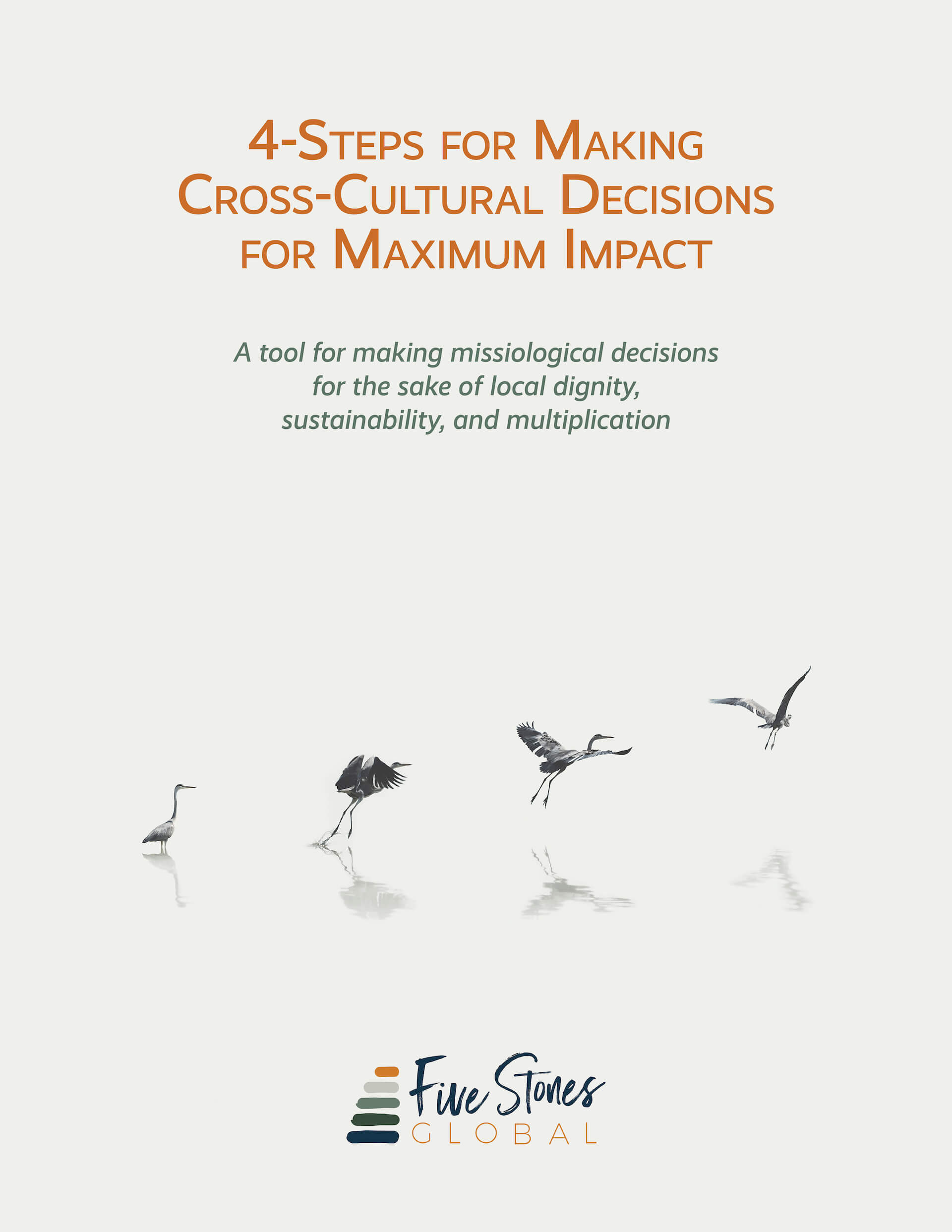By Jean Johnson
Re-Jesus Missions Series
Part 3: Jesus’ 8-Fold Pattern of Orthopraxy
In Part 2 of this blog series How Does Jesus’ Synagogue and Mountainside Talk Affect Missions?, we left off with this question:
- What were Jesus’ main repetitive actions (orthopraxy) in fulfilling His words (orthodoxy) read from the scroll of Isaiah according to the gospel of Luke?
“The Spirit of the Lord is upon Me,
Because He has anointed Me
To preach the gospel to the poor;
He has sent Me to heal the brokenhearted,
To proclaim liberty to the captives
And recovery of sight to the blind,
To set at liberty those who are oppressed;
To proclaim the acceptable year of the Lord.” (Luke 4:18-19, VOICE)
Those of us who are missions-minded deeply value these words quoted by Jesus; and we tend to claim them as our own mission statement — to minister to the poor, brokenhearted, captives, and so forth.
In this case, we should equally identify and emulate Jesus’ manner of acting upon those claims — for surely Jesus knew the best mission strategy to fulfill His mission statement. In order to learn His strategy, I have been trailing Jesus in the Gospel of Dr. Luke. While there are slight variations, I think I uncovered Jesus’ 8-fold pattern:
- Spoke the good news of the kingdom of God
- Released people from bondage: demons, sickness, and death
- Spent time with sinners
- Offered forgiveness to sinners
- Made disciples in community via on-the-job training
- Challenged old wine skins with the new
- Persevered under persecution
- Prayed to the Father Allow me to share one account for each action from the Gospel of Luke: Spoke the good news of the kingdom of God
He went to Capernaum, another Galilean city. Again He was in the synagogue teaching on the Sabbath, and as before, the people were enthralled by His words. He had a way of saying things—a special authority, a unique power (Luke 4:31-33, VOICE).
Released people from bondage: demons, sickness, and death
By this time, it’s just before nightfall, and as the sun sets, groups of families, friends, and bystanders come until a huge crowd has gathered. Each group has brought along family members or friends who are sick with any number of diseases. One by one, Jesus lays His hands on them and heals them. On several occasions, demonic spirits are expelled from these people, after shouting at Jesus, “You are the Son of God!” (Luke 4:40-41, VOICE).
Spent time with sinners
The Pharisees and their associates, the religious scholars, got the attention of some of Jesus’ disciples.
Pharisees (in low voices): What’s wrong with you? Why are you eating and drinking with tax collectors and other immoral people?
Jesus (answering for the disciples): Healthy people don’t need a doctor, but sick people do. I haven’t come for the pure and upstanding; I’ve come to call notorious sinners to rethink their lives and turn to God (Luke 5:30-32, VOICE).
Offered forgiveness to sinners
Which is easier to say, ‘Your sins are forgiven’ or ‘Get up and walk’? Just so you’ll know that the Son of Man is fully authorized to forgive sins on earth (He turned to the paralyzed fellow lying on the pallet), I say, get up, take your mat, and go home (Luke 5:23-24, VOICE).
Made disciples in community via on-the-job training
Don’t be afraid, Simon. From now on, I’ll ask you to bring Me people instead of fish. The fishermen haul their fish-heavy boats to land, and they leave everything to follow Jesus (Luke 5:10-11, VOICE).
Challenged old wine skins with the new
Jesus: Here’s a question for you: “On the Sabbath Day, is it lawful to do good or to do harm? Is it lawful to save life or to destroy it?”
Then Jesus spoke directly to the religious scholars and Pharisees. He turned His gaze to each of them, one at a time. Then He spoke to the man.
Jesus: Stretch your hand out.
As the man did, his deformed hand was made normal again. This made the Pharisees and religious scholars furious. They began discussing together what they would do to Jesus (Luke 6:9-11, VOICE).
Persevered under persecution
The people in the synagogue became furious when He said these things. They seized Jesus, took Him to the edge of town, and pushed Him right to the edge of the cliff on which the city was built. They would have pushed Him off and killed Him, but He passed through the crowd and went on His way (Luke 4:28-30, VOICE).
Prayed to the Father
Around this time, Jesus went outside the city to a nearby mountain, along with a large crowd of His disciples. He prayed through the night to God (Luke 6:2, VOICE).
While the places, people, contexts, and encounters vary, Jesus repeats this 8-fold pattern again and again.
Of course, Jesus’ final act as the Son of Man was to die and rise again on our behalf.
If we take to heart Jesus’ convictions (orthodoxy) expressed in Luke 4:18-19, then we should take to heart how He fulfilled his convictions (orthopraxy). Thus, if we want to Re-Jesus missions, we would need to make his 8-fold pattern our own:
- Speak the good news of the kingdom of God
- Release people from bondage
- Spend time with sinners
- Offer Jesus’ forgiveness to sinners
- Make disciples in community via on-the-job training
- Challenge old wine skins with the new
- Persevere under persecution
- Pray to the Father I will leave you here with one question to think about for next time:
- If Jesus went into the food business (serving his 8 options), do you think he would open a brick and mortar restaurant or a food truck?


